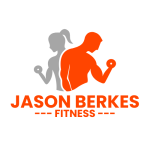Movement is a fascinating orchestration of bones, muscles, tendons and ligaments. Understanding how your body functions can enhance athletic performance, prevent injuries and appreciate the intricate beauty of human anatomy. In this comprehensive guide, we’ll explore the anatomy of movement, delving into the systems, mechanisms and techniques to optimize your physical potential.
The Musculoskeletal System
The musculoskeletal system comprises:
- Bones: 206 bones forming the skeletal framework.
- Muscles: Over 600 muscles generating movement.
- Tendons: Fibrous tissues connecting muscles to bones.
- Ligaments: Connective tissues stabilizing joints.
Joint Mechanics
Joints facilitate movement:
- Synovial Joints: Freely moving (e.g., knees, elbows).
- Cartilaginous Joints: Partially moving (e.g., spine).
- Fibrous Joints: Immovable (e.g., skull).
Muscle Mechanics
Muscles work together:
- Agonists: Primary movers (e.g., biceps curl).
- Antagonists: Opposing muscles (e.g., triceps).
- Synergists: Assisting muscles (e.g., forearm muscles).
- Stabilizers: Maintaining posture (e.g., core muscles).
Movement Planes
Understanding movement planes enhances exercise effectiveness:
- Sagittal Plane: Forward/backward movements (e.g., squats).
- Frontal Plane: Side-to-side movements (e.g., lateral lunges).
- Transverse Plane: Rotational movements (e.g., medicine ball throws).
Kinetic Chain
The kinetic chain concept highlights interconnected movement:
- Proximal: Muscle activation originates from the center (e.g., core).
- Distal: Movement transfers to extremities (e.g., arms, legs).
Proprioception and Balance
Proprioception (position/movement awareness) and balance are vital:
- Proprioceptors: Sensors in muscles, tendons and joints.
- Vestibular System: Inner ear balance mechanisms.
- Visual Input: Visual cues aiding balance.
Effective Movement Techniques
Apply these techniques:
- Mind-Muscle Connection: Focus on muscle activation.
- Controlled Movements: Slow, deliberate actions.
- Progressive Overload: Gradually increase intensity.
- Functional Exercises: Mimic daily activities.
Common Movement Patterns
Master these essential patterns:
- Squat: Hip, knee and ankle coordination.
- Lunge: Balance, strength and flexibility.
- Push: Shoulder, chest and tricep integration.
- Pull: Back, shoulder and arm synchronization.
Injury Prevention and Management
Avoid and address injuries:
- Warm-up/Cool-down: Prevent muscle strains.
- Proper Technique: Reduce joint stress.
- Strengthen Weak Points: Address imbalances.
- Rest and Recovery: Allow healing time.
Conclusion
Embracing the anatomy of movement unlocks enhanced performance, injury resilience and appreciation for the human body’s complexity. Embrace this knowledge, and awaken your full physical potential.

